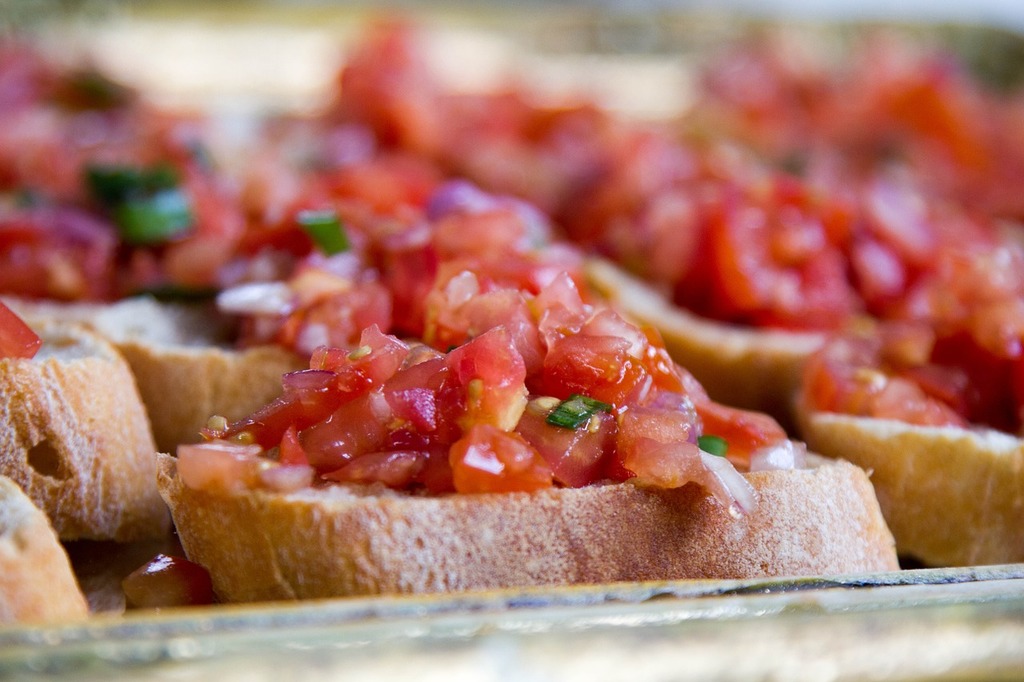Bruschetta, the humble Italian appetiser and classic antipasto, has a long and fascinating history. Bruschetta’s origins date back to ancient Rome, where the practice of toasting bread was a practical necessity. Farmers and labourers in Italy would use stale or leftover bread, toasting it over an open fire to restore its texture and flavour.
This toasting process, combined with a drizzle of olive oil and a sprinkle of salt, was a frugal yet satisfying meal for the working class. ‘Bruschetta’ comes from the Italian verb ‘bruscare,’ meaning to roast over coals or to toast.
Olive oil plays a central role in the history of bruschetta. This basic preparation of toasted bread with olive oil was a way for olive farmers to sample their freshly pressed oil. They would toast slices of bread, rub them with garlic, and drizzle the oil to assess its quality.
As with many traditional Italian dishes, bruschetta varies from region to region. The toppings used to complement the toasted bread often reflect local ingredients and culinary preferences of each area.
In central Italy, particularly in Tuscany and Umbria, bruschetta is often served very simply, with just olive oil, garlic, and a pinch of salt, allowing the flavours of the olive oil to shine.
In southern Italy, the dish evolves with the addition of ripe, juicy tomatoes and fresh basil, creating the more familiar version of bruschetta that has become popular worldwide. This tomato-topped bruschetta highlights the region’s access to sun-ripened tomatoes, a key ingredient in southern Italian cuisine.
In some parts of Italy, bruschetta is topped with a variety of local ingredients, from artichokes and mushrooms to cured meats like prosciutto or salami. In Sicily, for example, bruschetta might be served with caponata, a flavourful eggplant and tomato relish.
Bruschetta’s simplicity and versatility have helped it transcend Italy’s borders to become a popular appetiser in restaurants and homes worldwide. As Italian cuisine became more accessible and fashionable in the 20th century, bruschetta found a place on menus far beyond Italy, particularly in Europe and North America.
In many parts of the world, bruschetta has evolved further, with chefs and home cooks alike experimenting with diverse toppings such as avocado, goat cheese, roasted peppers, or balsamic glaze. While these innovations stray from the traditional Italian versions, they showcase the dish’s adaptability and its ability to reflect local tastes and trends.







Click here to change your cookie preferences